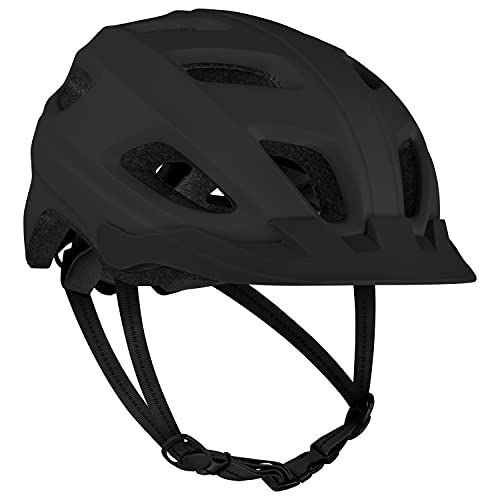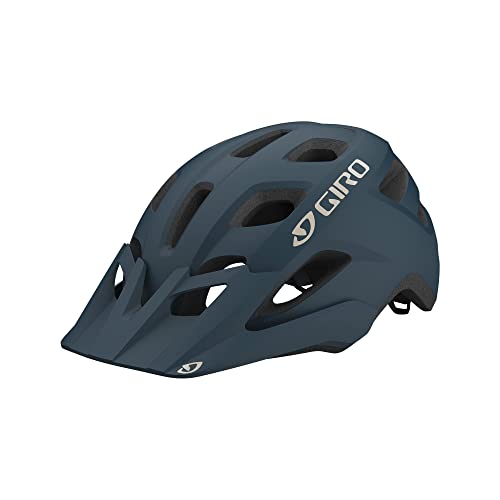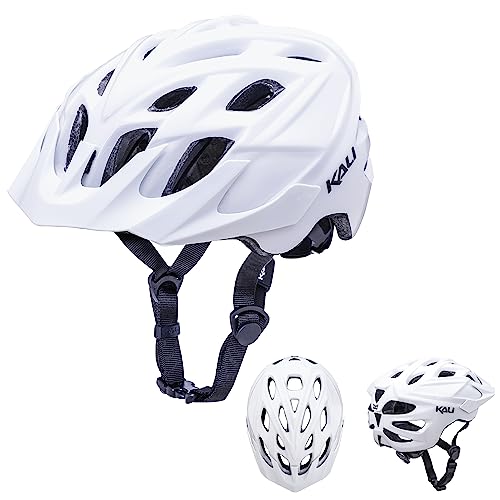Cycling has long been a field where innovation and inclusivity have pushed the boundaries, particularly in the development of gear tailored for women. The right cycling gear can significantly impact performance, comfort, and safety, making it crucial for female cyclists to choose apparel and accessories that cater specifically to their needs. This article dives into the essentials of women's cycling gear, highlighting how each piece can empower female cyclists to ride longer, faster, and with more enjoyment.
Essential Cycling Apparel: Layering For Comfort And Performance
When it comes to women's cycling gear, layering is key for achieving the perfect balance of comfort and performance. By strategically choosing and combining different apparel pieces, female cyclists can regulate their body temperature, manage moisture, and ensure a comfortable ride in various weather conditions. Let's delve into the essential cycling apparel layers that empower female cyclists to conquer the roads and trails.
Base Layers: The foundation of any cycling outfit, base layers are designed to wick moisture away from the skin, keeping you dry and comfortable during intense rides. Look for lightweight fabrics with excellent breathability, such as merino wool or synthetic blends. These materials will help regulate your body temperature, preventing chills when you stop and minimizing overheating during climbs.
Jerseys: Cycling jerseys are more than just stylish tops; they are functional pieces that enhance your riding experience. A well-fitting jersey should be snug but not restrictive, allowing for a full range of motion. Look for jerseys with back pockets to store essentials like snacks, tools, and a spare tube. Additionally, consider features like full-length zippers for ventilation and reflective elements for added visibility.
Bib Shorts: The cornerstone of cycling comfort, bib shorts provide crucial support and cushioning for long rides. The chamois padding in bib shorts absorbs shock and reduces friction, preventing saddle sores and chafing. Women-specific bib shorts are designed with anatomical considerations in mind, ensuring a comfortable and supportive fit. Look for shorts with wide, compressive leg bands that stay in place without digging into your skin.
Jackets And Vests: Weather can be unpredictable, so it's essential to have versatile outerwear options for cycling. A lightweight, packable jacket or vest can shield you from wind and light rain, while a more substantial insulated jacket will keep you warm in colder temperatures. Look for water-resistant or waterproof materials, and consider features like ventilation zippers and reflective accents for added functionality and safety.
Socks And Shoe Covers: Often overlooked, socks and shoe covers play a crucial role in overall cycling comfort. Cycling-specific socks are designed to wick moisture, prevent blisters, and provide cushioning. Shoe covers, on the other hand, can add a layer of warmth in colder weather and protect your shoes from road spray and grime. Choose socks and shoe covers made from breathable materials that fit snugly without restricting circulation.
Bike Accessories Designed For Women's Bodies
Beyond apparel, bike accessories tailored to women's anatomy can significantly enhance comfort, control, and overall cycling experience. Understanding the unique needs of female cyclists, manufacturers have developed a range of accessories that cater specifically to women's bodies. Let's explore these essential bike accessories that empower women to ride with confidence and ease.
Saddles: One of the most crucial contact points between a cyclist and their bike, saddles play a pivotal role in comfort and performance. Women-specific saddles are designed with wider rear sections and shorter noses to accommodate the female anatomy and relieve pressure on sensitive areas. Look for saddles with adequate padding and a cutout design to improve blood flow and reduce numbness during long rides.
Handlebars: Handlebar width and shape can significantly impact a cyclist's posture, control, and comfort. Women tend to have narrower shoulders than men, so a narrower handlebar can promote a more natural and comfortable riding position. Additionally, handlebars with a shorter reach can reduce strain on the back and shoulders. Consider trying different handlebar options to find the perfect fit for your body and riding style.
Grips And Bar Tape: Grips and bar tape provide cushioning and grip, reducing hand fatigue and improving control. Opt for grips that are ergonomically designed to conform to the shape of your hands and offer adequate padding. Bar tape, which wraps around the handlebars, can further enhance grip and provide vibration dampening, reducing hand numbness on rough roads.
Pedals And Cleats: Clipless pedals and cleats allow cyclists to "clip in" to their pedals, creating a more efficient power transfer and a smoother pedaling motion. Women-specific cycling shoes often have a narrower fit and lower volume to accommodate smaller feet. When choosing cleats, ensure they are compatible with your cycling shoes and adjust them properly to optimize foot alignment and prevent knee pain.
Helmets: Safety should always be a top priority for cyclists, and helmets are non-negotiable. Women's cycling helmets are designed with a smaller fit and a more feminine aesthetic. Look for helmets with MIPS technology, which reduces rotational forces during impacts, and ensure a proper fit by adjusting the straps and retention system. A well-fitting helmet should sit level on your head, covering your forehead and not obstructing your vision.
Safety Gear Prioritizing Visibility And Protection
Safety is paramount for female cyclists, and investing in the right gear can significantly reduce the risk of accidents and injuries. By prioritizing visibility and protection, women can confidently navigate roads and trails, ensuring a safe and enjoyable cycling experience. Let's delve into the essential safety gear that empowers female cyclists to ride with peace of mind.
Lights: Whether you're commuting in the city or exploring trails, lights are essential for ensuring visibility in low-light conditions. Daytime running lights, which emit a bright flashing pattern, help you stand out to motorists even in broad daylight. For nighttime rides, invest in powerful headlights and taillights that illuminate your path and make you visible from a distance. Rechargeable lights offer convenience and sustainability, eliminating the need for disposable batteries.
Reflective Accessories: In addition to lights, reflective accessories can significantly enhance your visibility, especially during dawn, dusk, or cloudy days. Consider adding reflective tape or stickers to your bike frame, helmet, and clothing. Reflective vests, ankle bands, and shoe covers can further increase your visibility from all angles, making you more noticeable to drivers and pedestrians.
Helmets: As mentioned earlier, helmets are non-negotiable for cyclists. Beyond MIPS technology, look for helmets with adequate ventilation to keep you cool during hot rides. A well-fitting helmet should feel snug but not tight, and the straps should be adjusted so that the helmet doesn't move around when you shake your head. Replace your helmet if it's been involved in a crash, as the protective foam may be compromised.
Gloves: Cycling gloves serve multiple purposes, including providing grip, cushioning, and protection from road rash in case of a fall. Look for gloves with padded palms to absorb vibrations and reduce hand fatigue. Full-finger gloves offer additional protection for your fingers in case of a crash or contact with obstacles. Choose gloves made from breathable materials to prevent your hands from getting sweaty and uncomfortable during long rides.
Eyewear: Protecting your eyes from the sun's harmful UV rays, wind, and debris is crucial for a comfortable and safe cycling experience. Cycling-specific eyewear offers features like UV protection, shatter resistance, and interchangeable lenses for different light conditions. Consider polarized lenses to reduce glare and improve visibility on bright days. A comfortable fit is essential to prevent the glasses from slipping or fogging up during your ride.
Performance-Enhancing Gear For Female Athletes
For female cyclists seeking to elevate their performance and push their limits, a range of specialized gear can make a significant difference. Whether you're training for a race or simply aiming to improve your personal best, investing in performance-enhancing gear can optimize your training, track your progress, and help you achieve your cycling goals. Let's explore the essential tools that empower female athletes to reach their full potential on two wheels.
Power Meters: Power meters are devices that measure the power output of your pedaling, typically in watts. This data provides valuable insights into your training intensity, helping you optimize your workouts and track your progress over time. Power meters can be integrated into your bike's crankset, pedals, or rear hub, and they transmit data to a compatible cycling computer or smartphone app. By understanding your power output, you can train smarter, target specific energy systems, and develop a more efficient pedaling technique.
GPS Cycling Computers: GPS cycling computers are versatile devices that offer a wealth of features for cyclists. They can track your speed, distance, elevation, and heart rate, as well as provide turn-by-turn navigation and mapping capabilities. Many GPS cycling computers also allow you to upload and follow structured workouts, analyze your training data, and connect with online communities of cyclists. With a GPS cycling computer, you can monitor your progress, set goals, and gain valuable insights into your performance.
Heart Rate Monitors: Heart rate monitors are essential tools for tracking your exertion levels and training in the correct zones. By monitoring your heart rate, you can ensure you're not overtraining or undertraining, and you can tailor your workouts to specific goals, such as improving endurance or building speed. Heart rate monitors can be chest straps, wrist-based devices, or even integrated into some cycling computers. Choose a comfortable and reliable model that suits your preferences and budget.
Cycling Shoes: Cycling shoes are designed to provide a stiff platform for efficient power transfer to the pedals. They feature a cleat attachment system that allows you to clip into clipless pedals, creating a secure connection between your foot and the bike. Women-specific cycling shoes often have a narrower fit and lower volume to accommodate smaller feet. Look for shoes with a comfortable fit, adjustable closure system, and a stiff sole for optimal power transfer.
Nutrition And Hydration: Proper nutrition and hydration are essential for optimal cycling performance and recovery. During long rides, it's crucial to replenish your energy stores and electrolytes to avoid bonking or cramping. Pack energy bars, gels, or chews that are easy to consume on the go, and carry a water bottle or hydration pack to stay hydrated. Experiment with different fueling strategies to find what works best for your body and riding style.
Remember, performance-enhancing gear is a tool to help you achieve your goals, not a magic bullet. Consistent training, proper nutrition, and adequate rest are equally important for optimizing your cycling performance. By combining these elements with the right gear, you can unlock your full potential as a female athlete and enjoy the thrill of cycling to the fullest.
Choosing The Right Gear For Your Cycling Discipline
Cycling is a diverse sport with various disciplines, each requiring specific gear to optimize performance and enjoyment. Whether you're a road cyclist seeking speed and efficiency, a mountain biker conquering rugged terrain, or a commuter prioritizing practicality and comfort, choosing the right gear for your chosen discipline can make a world of difference. Let's explore the key considerations for selecting gear that aligns with your cycling style and goals.
Road Cycling: Road cycling is all about speed, efficiency, and long distances. For this discipline, prioritize lightweight and aerodynamic gear that minimizes wind resistance. Opt for a road bike with a lightweight frame, narrow tires, and drop handlebars. Choose a snug-fitting jersey and bib shorts made from breathable and moisture-wicking fabrics. Clipless pedals and cycling shoes with stiff soles will enhance power transfer and efficiency. Invest in a lightweight helmet with excellent ventilation to keep you cool during long rides.
Mountain Biking: Mountain biking demands gear that can withstand the rigors of off-road terrain. Durability, protection, and traction are paramount for tackling technical trails and challenging obstacles. Choose a mountain bike with a sturdy frame, suspension to absorb shocks, and wide, knobby tires for grip. Opt for loose-fitting mountain bike-specific apparel that allows for a full range of motion and offers protection from branches and brush. Full-finger gloves and knee pads are essential for protecting your hands and knees from falls and impacts.
Gravel Cycling: Gravel cycling blends elements of road and mountain biking, requiring gear that can handle both paved and unpaved surfaces. Versatility and comfort are key considerations for this discipline. A gravel bike with wider tires, a relaxed geometry, and disc brakes is ideal for tackling a variety of terrain. Choose apparel that offers a balance of comfort and performance, such as a loose-fitting jersey, bib shorts with a comfortable chamois, and a lightweight jacket for unpredictable weather conditions.
Commuting: For commuting cyclists, practicality, visibility, and weather protection are top priorities. Choose a bike that is comfortable and easy to maneuver in traffic. Upright handlebars, fenders, and a rack for carrying bags are common features on commuter bikes. Opt for apparel that is comfortable for everyday wear and offers protection from the elements. Consider bright colors or reflective elements to enhance your visibility to motorists.
Bikepacking: Bikepacking involves multi-day adventures where you carry all your gear on your bike. Lightweight and durable gear is essential for this discipline. Choose a bike with ample mounting points for bags and racks. Invest in lightweight bikepacking bags designed to fit your bike's frame and carry all your essentials, including a tent, sleeping bag, and cooking equipment. Prioritize comfort and versatility in your apparel choices, opting for moisture-wicking fabrics and layering options for changing weather conditions.
Remember, choosing the right gear is a personal journey. Experiment with different options to find what works best for your body, riding style, and budget. By carefully selecting gear that aligns with your cycling discipline and goals, you can enhance your performance, maximize comfort, and fully embrace the joy of cycling.
Summary
This comprehensive guide to women's cycling gear covers the essentials, from layering apparel for comfort and performance to bike accessories designed specifically for women's bodies. It emphasizes safety gear for visibility and protection, highlights performance-enhancing tools for female athletes, and offers guidance on choosing the right gear for various cycling disciplines. Whether you're a road cyclist, mountain biker, gravel enthusiast, commuter, or bikepacker, this resource empowers women to make informed decisions about their cycling gear, ensuring a safe, comfortable, and enjoyable ride.







